Author: Lucio Chachamovich

-
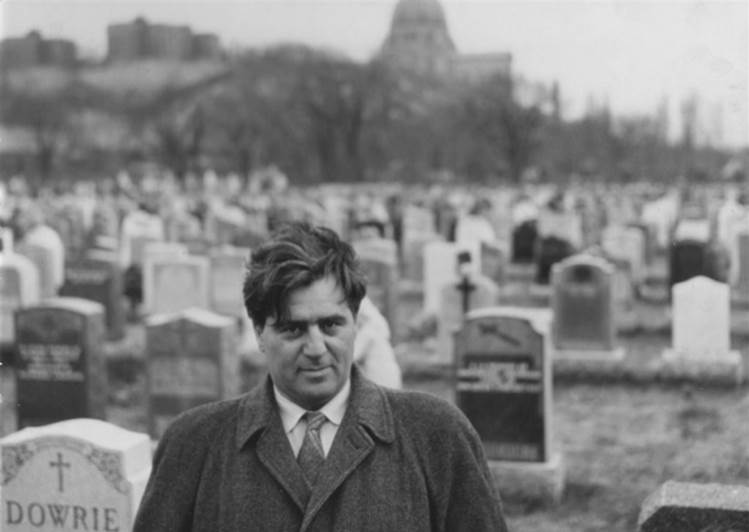 Irving Layton at the Cimetière Notre-Dame-Des-Neiges, ca. 1950sPhoto Credit : irvinglayton.com
Irving Layton at the Cimetière Notre-Dame-Des-Neiges, ca. 1950sPhoto Credit : irvinglayton.com -
 Irving Layton with his protégé and friend Leonard Cohen, ca. 1990.Photo Credit : irvinglayton.com
Irving Layton with his protégé and friend Leonard Cohen, ca. 1990.Photo Credit : irvinglayton.com -
 An advertisement for a series of films presenting the stories of famous Montreal writers, featuring Irving Layton. 1986.Photo Credit : Alex Dworkin Canadian Jewish Archives
An advertisement for a series of films presenting the stories of famous Montreal writers, featuring Irving Layton. 1986.Photo Credit : Alex Dworkin Canadian Jewish Archives -
 Tibi Rome, Saul Bellow, Irving Layton, and David Rome, Saul Bellow's visit to the Jewish Public Library, Jewish Book Month, Montreal.Photo Credit : Jewish Public Library - Archives
Tibi Rome, Saul Bellow, Irving Layton, and David Rome, Saul Bellow's visit to the Jewish Public Library, Jewish Book Month, Montreal.Photo Credit : Jewish Public Library - Archives -
 Cartoon entitled Irving Layton: Poet of Passion by Shane, 1967.Photo Credit : Alex Dworkin Canadian Jewish Archives
Cartoon entitled Irving Layton: Poet of Passion by Shane, 1967.Photo Credit : Alex Dworkin Canadian Jewish Archives -
 Irving Layton, ca. 1960s.Photo Credit : Alex Dworkin Canadian Jewish Archives
Irving Layton, ca. 1960s.Photo Credit : Alex Dworkin Canadian Jewish Archives -
 Irving Layton (top row, 3rd from right) as teacher at Herzliah High School, ca. 1950s. Photo taken in Fletcher's Field (now Parc Jeanne Mance). Herzliah High School in upper right-hand corner of imagePhoto Credit : irvinglayton.com
Irving Layton (top row, 3rd from right) as teacher at Herzliah High School, ca. 1950s. Photo taken in Fletcher's Field (now Parc Jeanne Mance). Herzliah High School in upper right-hand corner of imagePhoto Credit : irvinglayton.com
Irving Layton
Israel Pinchus Lazarovitch, better known as Irving Layton, was a world-famous poet and Nobel Prize nominee who helped pioneer the creation of a distinctly modern Canadian poetry.
Layton was born in 1912 in a small town in Romania. The following year, his family moved to the heart of the Jewish neighbourhood in downtown Montreal. In 1926, Layton entered Baron Byng High School, where his life was transformed by his introduction to the works of Shakespeare, Wordsworth and Austen, among many others. His increasing involvement with the Young People’s Socialist League led to his expulsion in 1930. Shortly thereafter, Layton was blacklisted due to his left-wing political views, and barred entry to the US for nearly two decades. He studied agriculture at McGill University and was known around campus for his anti-bourgeois attitude and his increasing dedication to poetry and the life of the poet.
After short stints in New York, Halifax, and the Canadian army, Layton settled down in Montreal, and entered the publishing world as partner to his friend and fellow Montreal poet, Louis Dudek. Together with John Sutherland, they created First Statement, a literary magazine and press. The new, younger poets set themselves up as a challenge to older Canadian writers like Northrop Frye, who habitually looked back to England for cues on what poetry should mean and what poets should do. Layton, Dudek and their peers, on the other hand, believed Canadian poets should forge their own path forward, and above all should represent and comment on the social realities of Canadian life in the middle of the 20th century.
After World War II, Layton earned a master’s degree in political science, and began teaching humanities at Herzliah High School, where he taught Irwin Cotler and many others. In the 1950s, Layton gradually earned first national and then international renown as a poet, particularly with the publication of A Red Carpet in the Sun (1958) and The Pole-Vaulter (1974) – the latter of which revealed the poet’s preoccupation with the Holocaust and what it represents. In 1982, Layton was nominated for the Nobel Prize in Literature, but lost to Gabriel Garcia Marquez. After having spent the 1970s writing and teaching in Toronto, Layton returned to Montreal in the early 1980s. He continually published until being diagnosed with Alzheimer’s in 1995.
Special thanks to the Museum of Jewish Montreal.
Learn more:
http://imjm.ca/location/1143
http://mimj.ca/location/1517
http://irvinglayton.com/

-
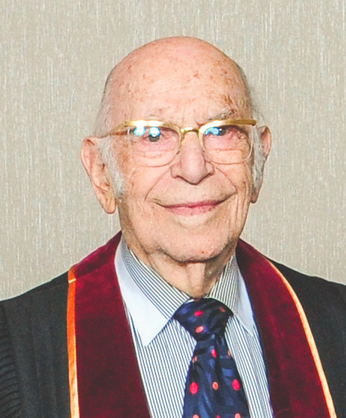 Michal HornsteinPhoto Credit : © Concordia University
Michal HornsteinPhoto Credit : © Concordia University -
 The Montreal Museum of Fine Arts launched the Michael and Renata Hornstein Pavilion for Peace in November 2016.Photo Credit : Montreal Gazette
The Montreal Museum of Fine Arts launched the Michael and Renata Hornstein Pavilion for Peace in November 2016.Photo Credit : Montreal Gazette -
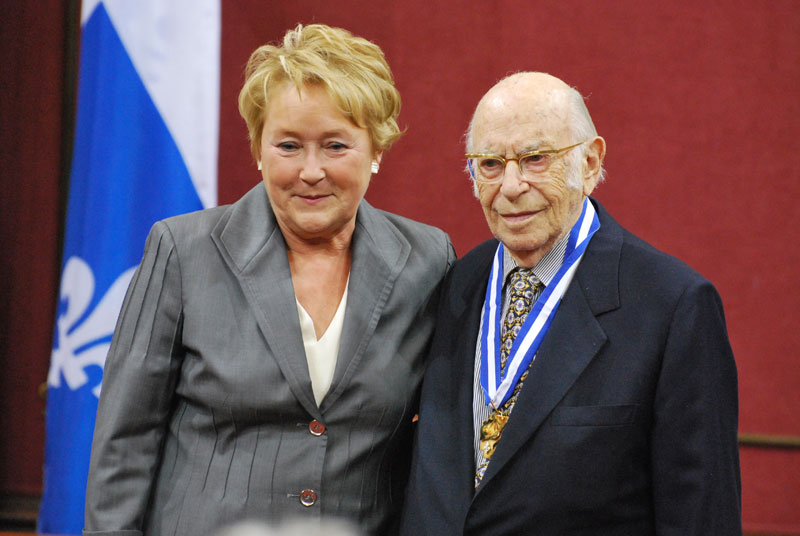 In 2013, Michal Hornstein was named to the National Order of Quebec.Photo Credit : Simon Villeneuve
In 2013, Michal Hornstein was named to the National Order of Quebec.Photo Credit : Simon Villeneuve
Michal and Renata Hornstein
Michal and Renata Hornstein were premier art collectors and philanthropists whose donations and contributions to Montreal have helped the city flourish economically and culturally.
Michal was born in Poland. Jumping off of a train to Auschwitz during the Holocaust, he hid in Europe over the course of the war, meeting his future wife, Renata (born in Lodz, Poland), in Bratislava. After marrying in Rome – where their love for art first developed – they immigrated to Montreal in 1951, and Michal founded a real estate company, Federal Construction Ltd.
As they developed residential and commercial properties across the city, the Hornsteins wanted to give back to Montreal – the city which, according to a 2012 interview with CBC, “gave [them] so much.” Thus began their relationship with the Montreal Museum of Fine Arts (MMFA). Michal initially joined as a member of the Board of Trustees in the 1970s, and in 1982, he became the Chair of the Acquisition Committee for European Art before 1900.
In addition to personally contributing over 420 works to the MMFA’s collection, Michal has also been instrumental in raising funds for the Museum’s development and growth. In 2012, the Hornsteins made the decision to donate their collection of 75 Old Masters to the MMFA – valued at over $100M, with paintings from the Renaissance to the Modern Era. Indeed, this was the largest private modern history donation to a Quebec museum ever and has had a significant impact on the MMFA. The Michal and Renata Hornstein Pavilion for Peace, designed to house the collection, opened in November 2016, as part of Montreal’s 375th anniversary celebrations.
In addition to their commitment to developing Montreal’s art collection, the Hornsteins have also been involved in philanthropy for many years. They are one of the major benefactors for the Montreal Heart Institute, the Montreal General Hospital, and the Jewish General Hospital, amongst others. They have also donated tremendously to Montreal’s universities. In 1998, they established the Renata Hornstein Graduate Fellowship in Art History for postgraduate work at Concordia.
Renata was fluent in seven languages, and published two memoirs in verse of her wartime experiences, in 2008 and 2012. Michal was made a Member of the Order of Canada (1984), a Knight of the National Order of Quebec (1993), an Officer to the National Order of Quebec (2002), and a Grand Officer to the National Order of Quebec (2013). In 2012, Montreal honoured the couple by naming them “Great Montrealers.” In 2014, Concordia’s John Molson School of Business conferred honorary doctorates on the Hornsteins for their lifelong dedication to philanthropy.
Michal and Renata passed away almost exactly three months apart, in April and July 2016, respectively. They leave behind an unmatched legacy to the cultural development of Montreal and Canada.
Learn more:
http://www.cbc.ca/news/canada/montreal/michal-hornstein-montreal-art-patron-dies-1.3556335
http://grandsmontrealais.ccmm.qc.ca/en/39/
https://en.wikipedia.org/wiki/Michal_Hornstein
http://www.concordia.ca/cunews/main/stories/2014/06/04/michal-and-renatahornsteintheincrediblestoryof2concordiahonorand.html
http://www.concordia.ca/cunews/offices/vpaer/aar/2016/07/26/concordia-mourns-the-loss-of-renata-hornstein.html

-
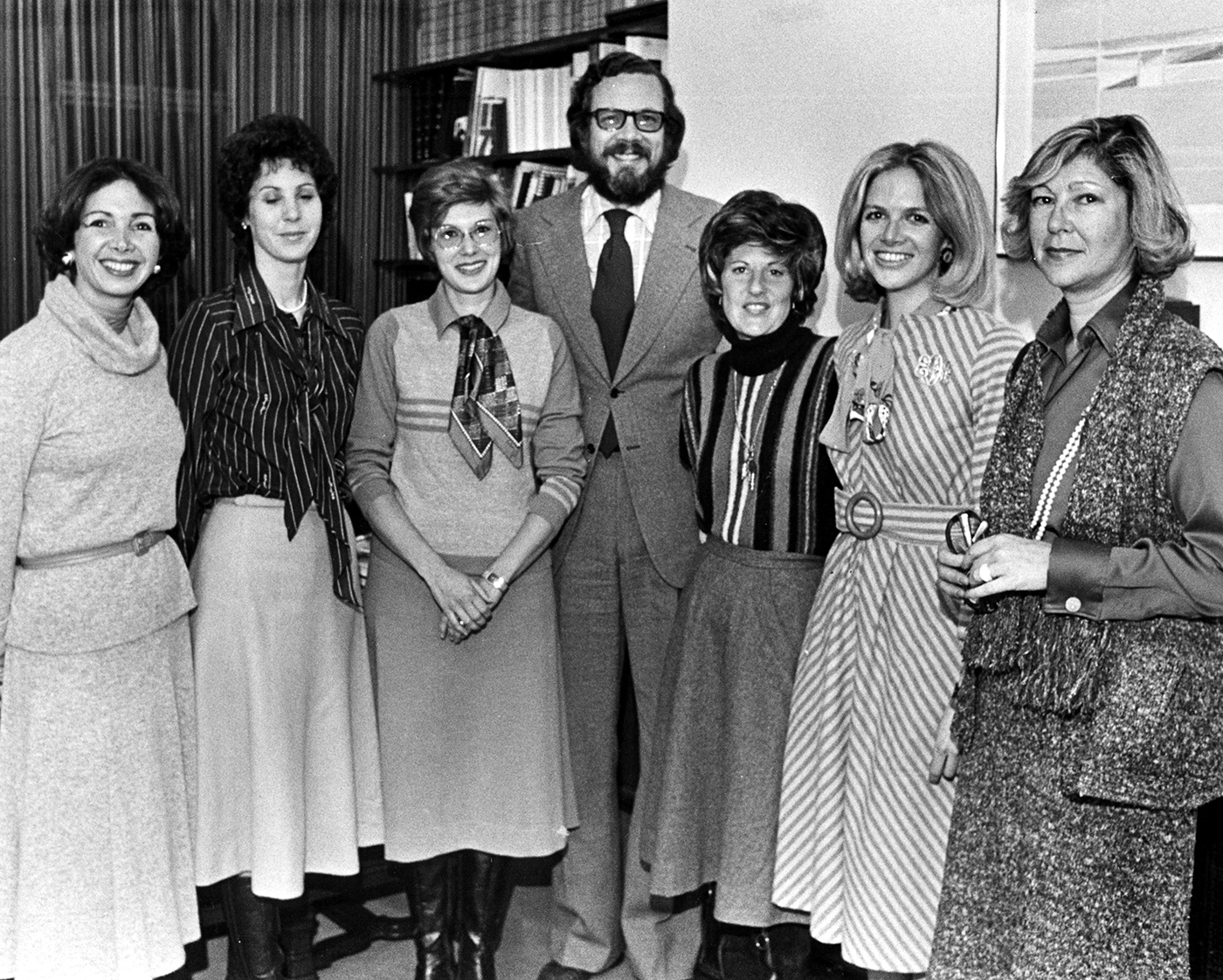 The Group of 35 with Secretary of State H. Faulkner in Ottawa.Photo Credit : Alex Dworkin Canadian Jewish Archives
The Group of 35 with Secretary of State H. Faulkner in Ottawa.Photo Credit : Alex Dworkin Canadian Jewish Archives -
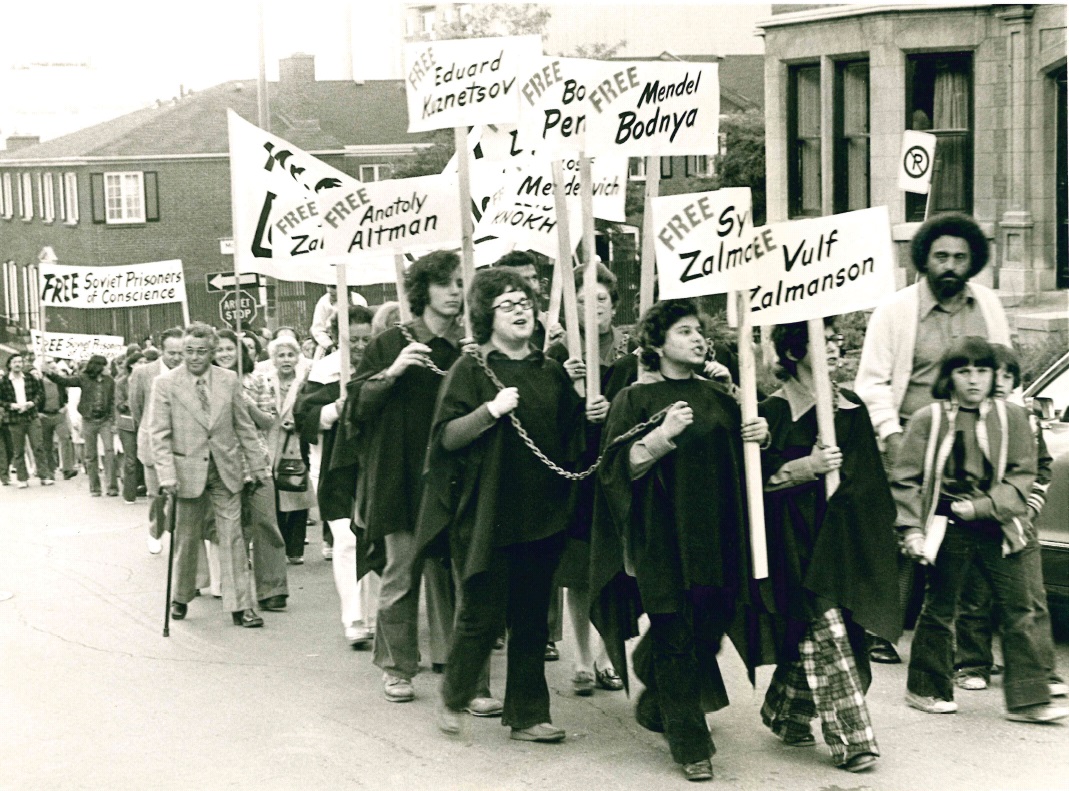 A Group of 35 demonstration in Ottawa on January 4, 1971.Photo Credit : Jewish Public Library - Archives
A Group of 35 demonstration in Ottawa on January 4, 1971.Photo Credit : Jewish Public Library - Archives -
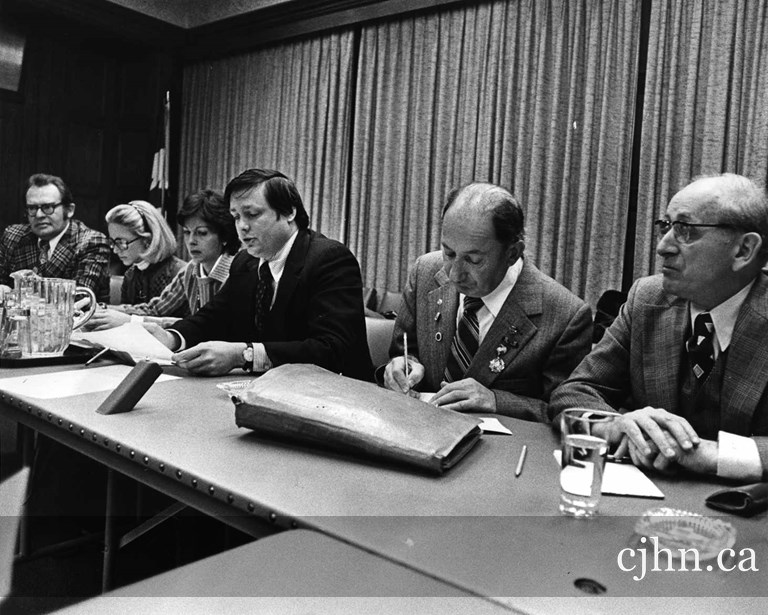 A Group of 35 conference.Photo Credit : Alex Dworkin Canadian Jewish Archives
A Group of 35 conference.Photo Credit : Alex Dworkin Canadian Jewish Archives -
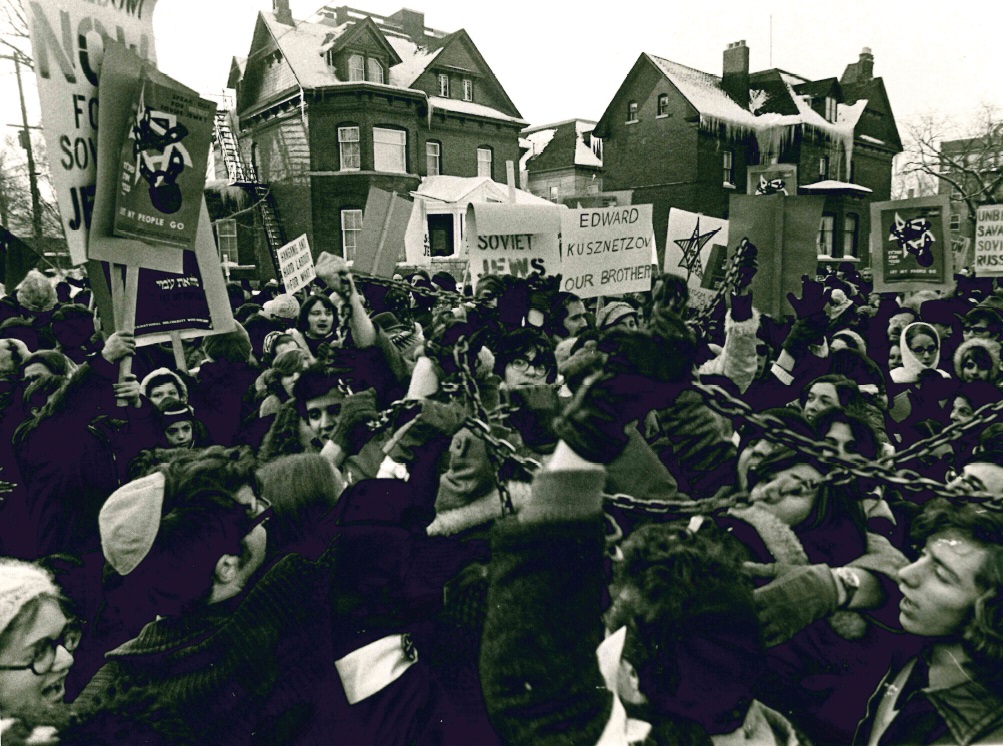 A Group of 35 demonstration in Ottawa on January 4, 1971.Photo Credit : Jewish Public Library - Archives
A Group of 35 demonstration in Ottawa on January 4, 1971.Photo Credit : Jewish Public Library - Archives
The Group of 35
The Group of 35 was a women’s political organization that worked tirelessly on behalf of the Refuseniks (people in the former Soviet Union who were refused permission to immigrate, typically Jews forbidden to immigrate to Israel) – supporting their struggle to emigrate from the Soviet Union in the 1970s.
The group developed in London, England in 1971, rallying around a 35-year-old Refusenik, Raissa Palatnik, who had been imprisoned in the Soviet Union without a trial. The protesters were made up of approximately 35 young mothers, all around the age of 35.
The movement was brought to Montreal by Andrea Bronfman, who organized an activist group of local women to rally on behalf of the Refuseniks. Wendy Litwack-Eisen, Elaine Dubow-Harris and Barbara Stern were key figures in the organization. Another close ally was Irwin Cotler, who had helped Natan Sharansky escape from the Soviet Union after being held prisoner for nine years.
The Group of 35 dedicated their time to the Refusenik cause by staging demonstrations and writing letters. Indeed, Soviet expatriates note that these women were both courageous and effective, bombarding Soviet embassies and ambassadors with pleas and protests, as well as clandestinely helping Refusenik families behind the Iron Curtain. The Group of 35 also spearheaded a 1987 rally in Washington DC that drew hundreds of thousands of protesters and is believed to have been a turning point in the Refuseniks finally being allowed to emigrate.
Learn more:
http://jewishtoronto.com/wendyspeech
http://www.cjnews.com/uncategorized/reunion-group-35-planned

-
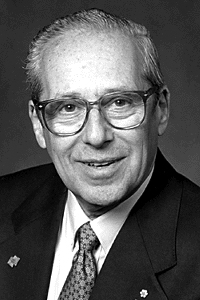
-
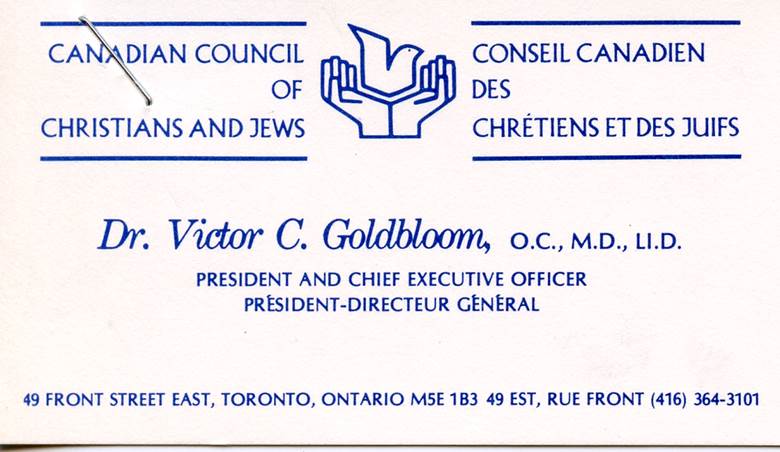 Business Card for Dr. Victor C. Goldbloom (1980s).Photo Credit : Jewish Public Library Archives
Business Card for Dr. Victor C. Goldbloom (1980s).Photo Credit : Jewish Public Library Archives -
 News clipping of Dr. Victor Goldbloom in the Canadian Jewish News.Photo Credit : Jewish Public Library - Archives
News clipping of Dr. Victor Goldbloom in the Canadian Jewish News.Photo Credit : Jewish Public Library - Archives
Victor Goldbloom
Victor Goldbloom had a long and successful career as a paediatrician, civil servant, politician and community leader who devoted his life to building bridges between different language and religious communities.
Goldbloom studied at Lower Canada College before receiving his Bachelor of Science from McGill University in 1944. He received his Doctor of Medicine in 1945, and his Diploma of Education in 1950. Soon after, he became an assistant resident at the Babies’ Hospital of the Columbia Presbyterian Medical Center in New York.
In the late 1960s, Goldbloom came back to Montreal, and entered the world of provincial politics. He was elected a Member of the National Assembly for the riding of D’Arcy McGee, in 1966, and continued to be re-elected for the next decade. He became the first Jewish Quebec cabinet minister and Quebec’s first ever Minister of Environment under Roberta Bourassa’s Premiership, a position he would hold until 1976. He later became Canada’s Commissioner of Official Languages (1991-1999). Goldbloom also served in many community development role; he was in charge of the 1976 Olympic Installations Board, for instance, and is credited with ensuring that those games began on time.
In 1979, Goldbloom became the President of the Canadian Council of Christians and Jews, becoming one of the first Jewish leaders in the province to take an active effort in building bridges between the Jewish community and the French Catholic community. Indeed, throughout his life, Goldbloom was committed to promoting diversity and tolerance. Well into his 80s, Goldbloom visited towns across the province in an effort to demystify Judasim in Quebec.
For his “outstanding devotion and his leadership in promoting Jewish-Christian dialogue and understanding,” he was made a Knight of the Order of St. Sylvester in 2012 by Pope Benedict XVI – a rare honour for someone of a non-Catholic background. He was appointed a Companion of the Order of Canada and an Officer of the National Order of Quebec.
In 1992, Goldbloom was awarded an honorary degree from McGill in recognition of his years of service to Montreal, Quebec and Canadian society. And in 1999, the Sheila and Victor Goldbloom Distinguished Community Service Award was established in his memory by the Quebec Community Groups Network (QCGN), to recognize individuals who have made major contributions to the vitality and understanding of Quebec’s English-speaking community.
Learn more:
https://www.youtube.com/watch?v=kYEEejYcqc4
http://www.cjnews.com/news/canada/victor-goldbloom-public-servant-community-leader-dies-at-92
http://www.parl.gc.ca/HousePublications/Publication.aspx?Pub=hansard&Language=E&Mode=1&Parl=41&Ses=1#SOB-7702532

-
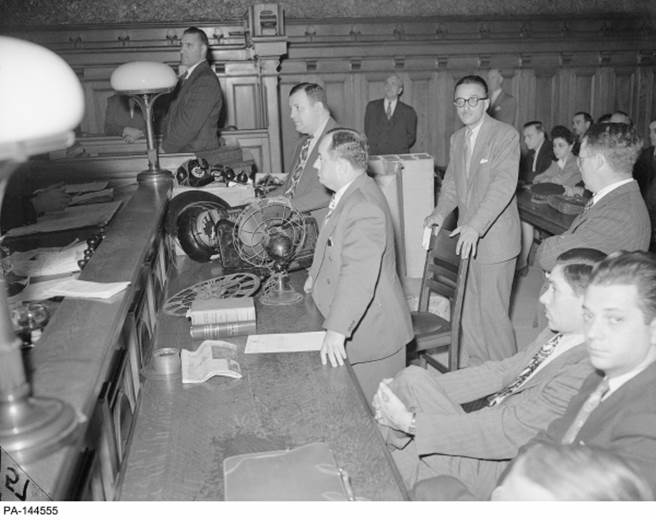 During the trial of Harry Ship, arrested following gambling raid by Montreal Police, Montreal, Quebec, 18 Sept. 1946. Photographer unknown. 1980-108. Montreal Star, #57.Photo Credit : © Public Archives Canada.
During the trial of Harry Ship, arrested following gambling raid by Montreal Police, Montreal, Quebec, 18 Sept. 1946. Photographer unknown. 1980-108. Montreal Star, #57.Photo Credit : © Public Archives Canada. -
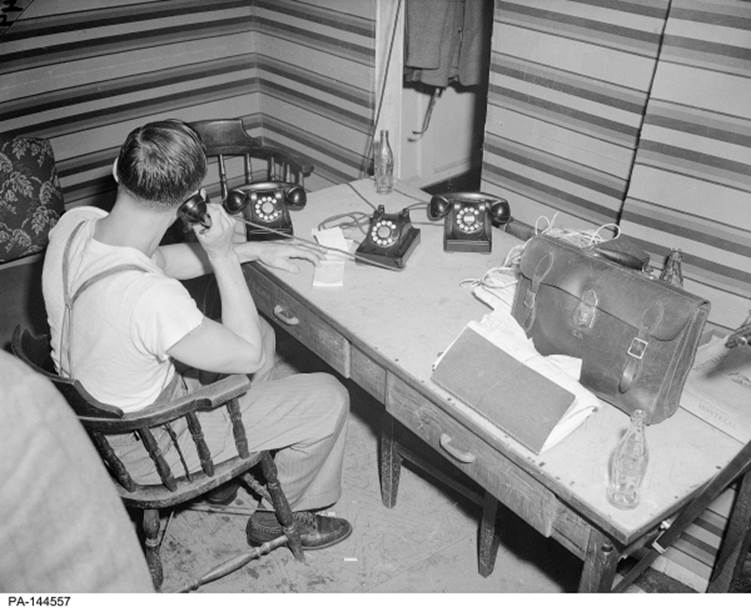 A view inside one of Ship's cubicles at his White House casinos. Bookies with various phones would take bets on anything from sports matches to elections. Photographer unknown. 1980-108. Montreal Star, #49.Photo Credit : © Public Archives Canada. Courtesy of Montreal Star / Public Archives Canada / PA-144557 and the Museum of Jewish Montreal.
A view inside one of Ship's cubicles at his White House casinos. Bookies with various phones would take bets on anything from sports matches to elections. Photographer unknown. 1980-108. Montreal Star, #49.Photo Credit : © Public Archives Canada. Courtesy of Montreal Star / Public Archives Canada / PA-144557 and the Museum of Jewish Montreal. -
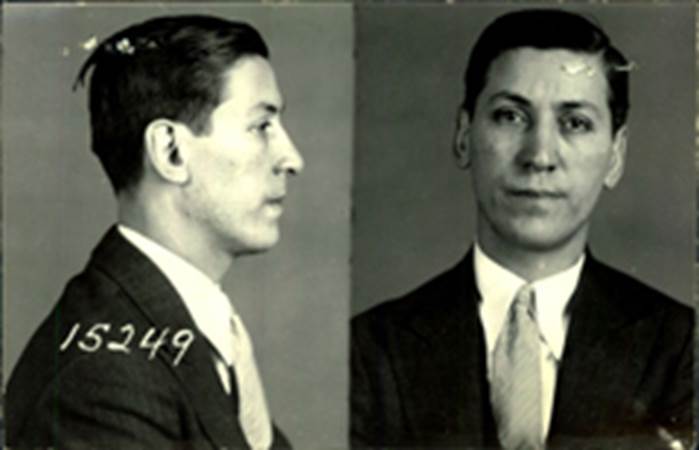 Mugshots of notable Montreal underworld personality Harry Davis in the 1930s.Photo Credit : Centre d'histoire de Montréal
Mugshots of notable Montreal underworld personality Harry Davis in the 1930s.Photo Credit : Centre d'histoire de Montréal
Jewish Gangsters
Until the arrival of New York’s Cosa Nostra in Montreal in the early 1950s, gambling and underworld crime were locally-run, and from the 1920s until the 50s, many Jews were actively involved in these illicit enterprises.
Max Shapiro came to Montreal from Poland in the 1920s and ran one of the most successful gambling houses in the city. Eventually, with partners, he opened the famous Ruby Foo’s hotel and restaurant.
Harry Feldman, of New York, owned a three-storey building on Bleury and Ste-Catherine, where the ground floor housed a legitimate business, but the upper floors were dedicated to bookmaking. Unlike his contemporaries, he lived quietly and did not get involved in the drug trade. He was a part owner of many significant establishments, including Chez Parée, and was known as a good family man. In fact, over the course of his 14-year career, he was never apprehended and his organizational skills were even praised by the chief of Montreal police at the time, Pacifique Plante.
Harry Davis of Romania was another prominent local gambler, responsible for the first underworld killing in Montreal. In 1935, he had Charles Feigenbaum—a police informant whose testimony had resulted in Davis’ 14-year sentence for smuggling morphine—murdered on Esplanade across from Fletcher’s Field. After several years in jail, Davis returned to the city in the mid-1940s and regained his title as gambling Tsar, controlling who could open gambling venues in the Red Light District and taking 20% from each. His rule came to an end on July 25, 1946, when he was shot to death in his gambling house at 1244 Stanley Street. He was killed by Louis Bercowitz, who did not receive Davis’s permission to open his own gambling establishment. Davis’s death permitted Harry Ship to dominate the gambling trade until his mistakes brought the New York Cosa Nostra to Montreal, engendering a new era of organized crime.
Harry Ship, called the King of the Montreal Gamblers, was a major bookmaker and operator of illegal casinos all over Montreal. Born in 1915, Ship studied mathematics at Queen’s University. Although he did not graduate, he excelled in his studies and was highly respected among his peers. He returned to Montreal in 1940, where he established a series of “white houses” along Ste-Catherine Street. Each house contained five telephone lines, blackboards and operators’ headsets, so bookies could take bets and write them up simultaneously. Business was so brisk that the apartments were often subdivided into halves and quarters to be able to house all the bookmakers. He also operated illegal casinos in Lachine, Greenfield Park, and on a farm in Côte St. Luc. Ship admitted that he made $1M annually, from 1940 to 1946 (equivalent: $15M today).
Although he lived lavishly, including owning a mansion in Outremont and the Chez Parée nightclub, which featured acts such as Frank Sinatra and Dean Martin, his operations were frequently raided and he paid huge sums of money to the local police. Eventually, he was arrested and sentenced to six months in jail.
Perhaps Ship’s legacy to Montreal is the introduction of New York’s Cosa Nostra into the city. It seems that Ship owed money to Frank Erikson, the wealthiest bookie on the East Coast, whose silent partners included Meyer Lansky, Frank Costello and Lucky Luciano. Due to his indebtedness, Ship was forced to accept the interference of the New York families in the early 1950s, which resulted in the Montreal underworld being controlled from New York, and the city becoming an important center for bookmaking and heroin smuggling. Little is known about Ship after this period, except that his is buried in the only family circle at the Baron De Hirsch Cemetery in Montreal and he, like so many other iconic figures, is immortalized in Mordecai Richler’s novel, The Apprenticeship of Duddy Kravitz.
Learn more:
http://imjm.ca/location/2078
Schneider, Stephen. Iced: The Story of Organized Crime in Canada
D’Arcy O’Connor, Montreal’s Irish Mafia: The True Story of the Infamous West End Gang
Stephen Schneider, Iced: The Story of Organized Crime in Canada
Kristian Gravenor, http://coolopolis.blogspot.ca/2011/10/montreals-top-10-gangland-murders-10.html

-
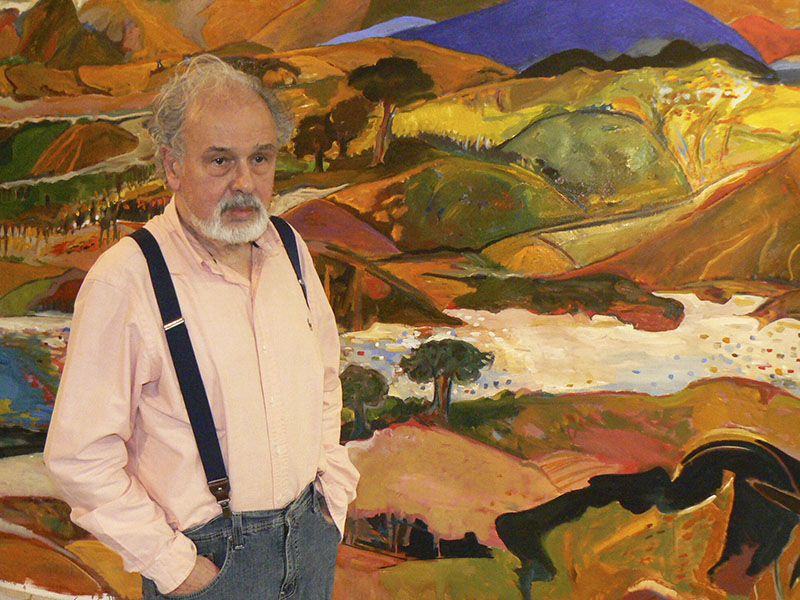 Yehouda Chaki with his landscape paintings at the Jewish General Hospital.Photo Credit : Canadian Jewish News
Yehouda Chaki with his landscape paintings at the Jewish General Hospital.Photo Credit : Canadian Jewish News -
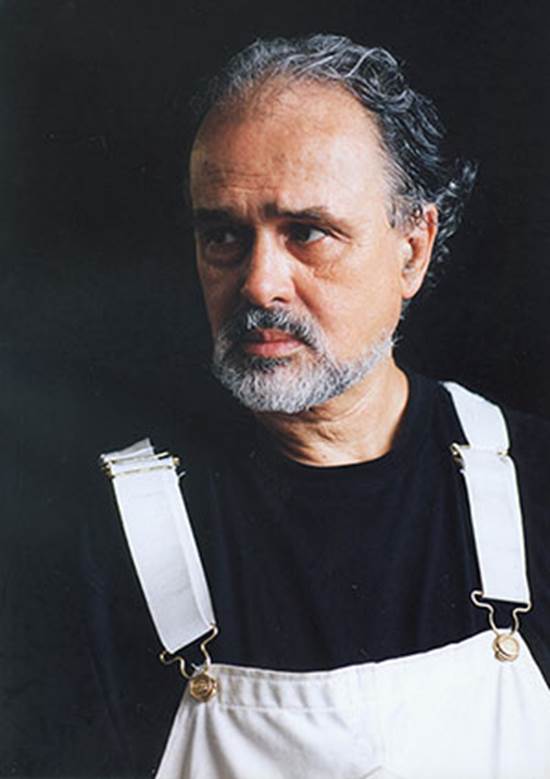 Yehouda Chaki.Photo Credit : Melissa Morgan Fine Art
Yehouda Chaki.Photo Credit : Melissa Morgan Fine Art -
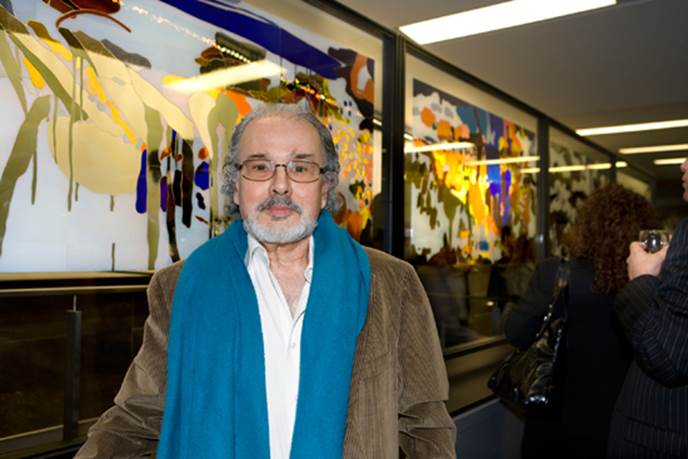 Yehouda Chaki at an unveiling of his new artwork in 2010 at Concordia University.Photo Credit : © Concordia University
Yehouda Chaki at an unveiling of his new artwork in 2010 at Concordia University.Photo Credit : © Concordia University
Yehouda Chaki
Yehouda Chaki is a Greek-Israeli-Canadian artist whose paintings have been exhibited around the world.
Chaki was born in Athens and then moved to Tel Aviv with his family, where they lived from 1945-1960. He studied art in Tel Aviv and in Paris, at the School of Fine Arts.
In 1959, Chaki began producing and exhibiting large-scale painted works, quickly becoming an internationally-renowned artist. In 1962, he immigrated to Canada; he has lived and worked in Montreal ever since. Chaki is known for painting vivid natural landscapes that mix the physical and visceral world, as well as lush still-lifes which feature bursts of bright colours and strong lines. His work is represented in collections world-wide.
From 1967-1989, he was the head of Painting and Drawing in the Department of Fine Arts at Montreal’s Saidye Bronfman Centre, where he remains the artistic advisor today. He was also the subject of the 1994 book Chaki: A Language of Passion.
Learn more:
http://www.concordia.ca/cunews/main/stories/2010/04/29/stained-glass-artwork-by-yehouda-chaki-unveiled-at-concordia.html
http://melissamorganfineart.com/artists/yehouda-chaki/
http://www.cjnews.com/culture/arts/artist-embodies-spirit-montreal
http://debellefeuille.com/chaki-yahouda-2/
https://www.youtube.com/watch?v=nm25Qa1Koe0

-
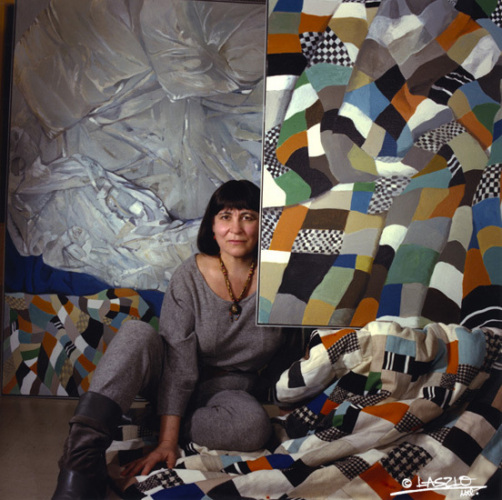 Ghitta Caiserman-Roth, 1985.Photo Credit : Laszlo Montreal
Ghitta Caiserman-Roth, 1985.Photo Credit : Laszlo Montreal -
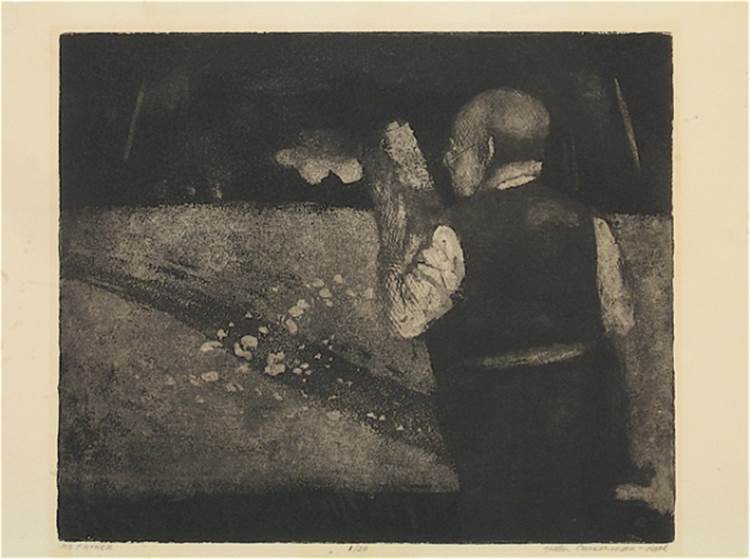 Untitled work by Ghitta Caiserman-Roth, 1975.Photo Credit : Alex Dworkin Canadian Jewish Archives
Untitled work by Ghitta Caiserman-Roth, 1975.Photo Credit : Alex Dworkin Canadian Jewish Archives -
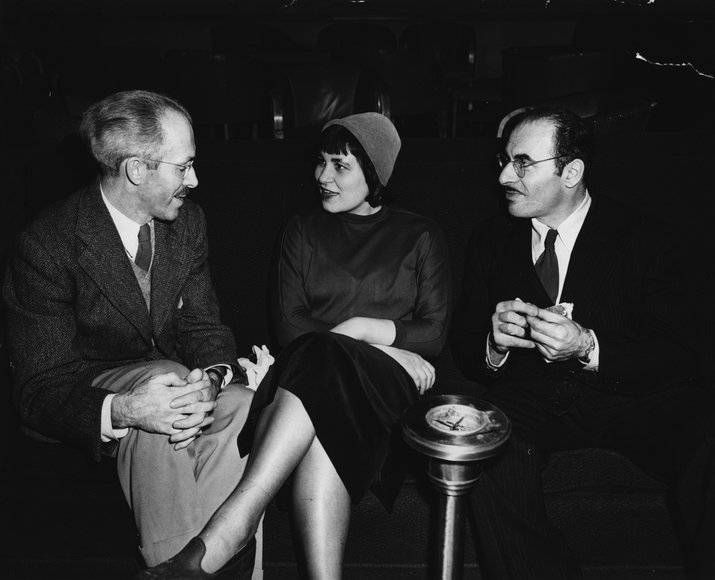 Ghitta Caiserman-Roth and Louis Muhlstock.Photo Credit : Alex Dworkin Canadian Jewish Archives
Ghitta Caiserman-Roth and Louis Muhlstock.Photo Credit : Alex Dworkin Canadian Jewish Archives
Ghitta Caiserman-Roth
Ghitta Caiserman-Roth was a well-known Canadian Jewish painter in the second half of the 20th century, also noted for her lithography and drawing.
Caiserman-Roth’s parents, Sarah (Wittal) Caiserman (1893-1967) and H.M. Caiserman (1881-1950), were of Romanian Jewish heritage. Sarah was a pioneering businesswoman who was the founder of Goosey Gander, a children’s wear company, and was also active in the Labour Zionist Farband [union]. H.M. helped found the Jewish Immigrant Aid Society and the Canadian Jewish Congress, two organizations central to Jewish communal life in Montreal. As with many Eastern European Jews of the time, H.M. was a socialist and part of the Labour Zionist movement, as well as a local leader of the United Garment Workers of America union.
Ghitta inherited her parents’ socialist values and also became involved in leftist organizations. Although she took a very personal approach to representation, her social values permeated her artwork in her choice of subjects. Moreover, H.M. also had an interest in culture; he published a book on Yiddish poets and reviewed numerous art exhibitions in the Keneder Adler. He even helped his daughter gain exposure by positively reviewing her works under a pen name.
Ghitta began her artistic career at a young age under the instruction of Alexander Bercovitch. When she was just 13, she was included in an exhibition of young artists organized by the Art Association of Montreal (today the Montreal Museum of Fine Arts). She studied art at the Parsons School of Design in New York, at the Art Students’ League of New York, and at the Montreal School of Fine Arts. Throughout her studies she met various well-known artists such as Harry Sternberg, a social realist, and Albert Dumouchel, an important painter during the modern period in Quebec.
She married Alfred Pinsky in 1945, with whom she founded the Montreal Artists School. In 1954, she gave birth to her daughter, Kathe, who inspired several paintings, such as Beach Still Life (1955) and First Steps (1956). Ghitta and Pinsky divorced in 1959, and she remarried Max Roth, a Montreal-based architect, in 1962. In addition to her artistic career, Ghitta taught at the Sir George William College (Concordia University) and at the Saidye Bronfman Centre. She gave summer classes in various universities outside of Montreal including Queen’s University, Mount Allison Universtity and Mount St. Vincent University.
Special thanks to the Museum of Jewish Montreal.
Learn more:
http://imjm.ca/location/2452
http://mimj.ca/location/2445
http://www.gallery.ca/en/see/collections/artist.php?iartistid=714
http://www.mccord-museum.qc.ca/en/exhibitions/jewish-painters-of-montreal/
http://www.jewishvirtuallibrary.org/jsource/judaica/ejud_0002_0004_0_03834.html
http://art-history.concordia.ca/eea/artists/caiserman-roth.html
http://www.collectionscanada.gc.ca/eppp-archive/100/205/301/ic/cdc/waic/ghcais/ghcais_f.htm
http://cwahi.concordia.ca/sources/artists/displayArtist.php?ID_artist=198
https://jwa.org/encyclopedia/article/caiserman-roth-ghitta
http://www.thecanadianencyclopedia.ca/en/article/ghitta-caiserman-roth/

-
 Hy Buller as a child player in 1938.Photo Credit : Icehockey.wikia.com
Hy Buller as a child player in 1938.Photo Credit : Icehockey.wikia.com -
 Hy Buller's hockey card.Photo Credit : BMW Sports
Hy Buller's hockey card.Photo Credit : BMW Sports -
 Hockey portrait of Hy Buller.Photo Credit : BMW Sports
Hockey portrait of Hy Buller.Photo Credit : BMW Sports
Hy Buller
Montreal-born Hy Buller was a professional hockey player who played for the Detroit Red Wings and the New York Rangers.
After getting his start in the amateur leagues, Buller played five seasons with the NHL for first the Detroit Red Wings and later the New York Rangers. He also played in the 1952 All-Star Game. Buller played defense and was nicknamed the “Blueline Blaster” because he would hit opposing players on the lower leg, between the skate and the pads. He was admired by others for his sportsmanship.
Born to an immigrant father from Vizhnitz, Bukovina,, and a local Jewish woman, Buller’s family originally lived in Montreal. In 1929, a tragic explosion at their cleaning and pressing business sent the family to Saskatoon, where Buller played ice hockey. Despite being Jewish, which eliminated him from serious consideration by scouts because all players had to go to church on a weekly basis, his abilities were so obvious that he was offered a place at the New York Rangers’ Winnipeg training camp.
In 1951, when he was traded to the New York Rangers, his faith was used to attract larger audiences in New York when banners with the Star of David hung in Madison Square Garden. In 1954, Buller was traded to the Montreal Canadiens, but before the season began, Buller announced his retirement. He and his wife moved to Vancouver, but after Buller’s diagnosis with cancer, they returned to Cleveland, where he died at age 42.
Learn more:
https://en.wikipedia.org/wiki/Hy_Buller
http://www.legendsofhockey.net/LegendsOfHockey/jsp/SearchPlayer.jsp?player=12145
http://nyrangerslegends.blogspot.ca/2008/03/hy-buller.html

-
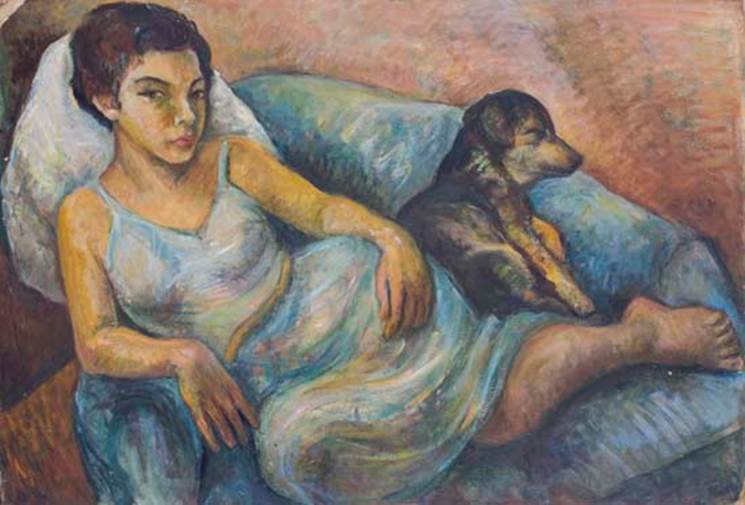 Rachel and Princie (1959), Sylvia Ary.Photo Credit : Sylvia Ary
Rachel and Princie (1959), Sylvia Ary.Photo Credit : Sylvia Ary -
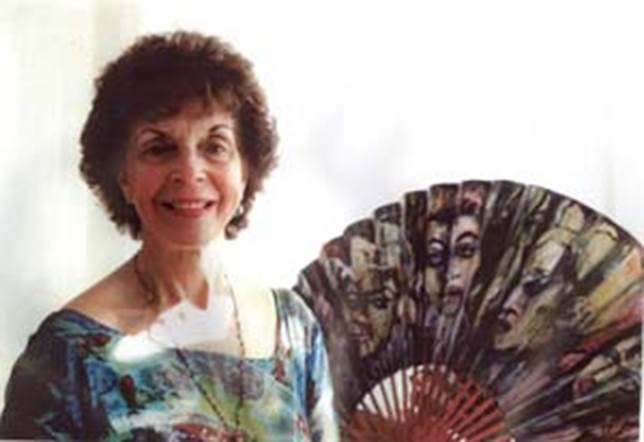 Sylvia Ary (2000s).Photo Credit : Sylvia Ary
Sylvia Ary (2000s).Photo Credit : Sylvia Ary -
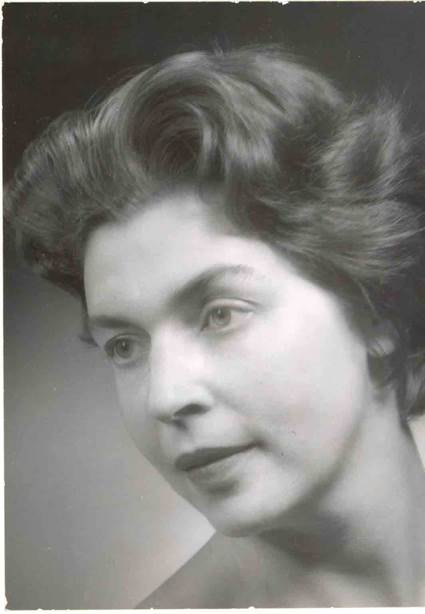 Portrait of Sylvia Ary ca. 1950s.Photo Credit : Alex Dworkin Canadian Jewish Archives
Portrait of Sylvia Ary ca. 1950s.Photo Credit : Alex Dworkin Canadian Jewish Archives -
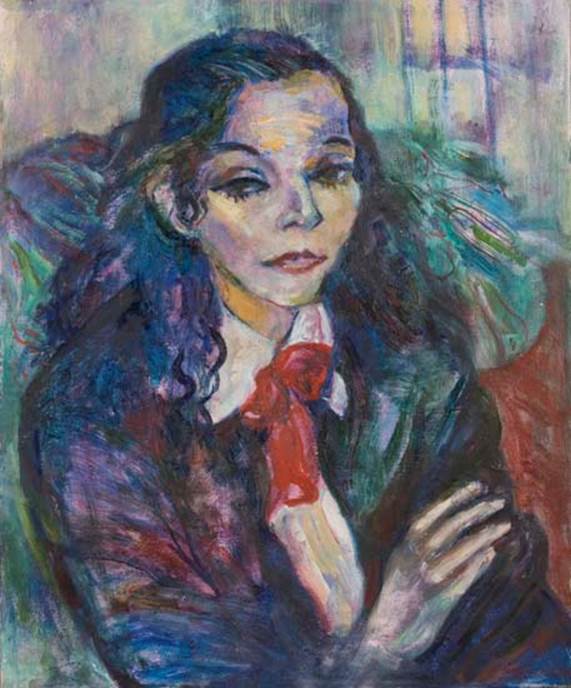 Model. 1991.Photo Credit : Sylvia Ary
Model. 1991.Photo Credit : Sylvia Ary
Sylvia Ary
Sylvia Ary was a prominent artist in the Montreal cultural milieu and a member of the Jewish Painters of Montreal.
Born in Moscow, Ary was the eldest child of Alexander Bercovitch, a painter, and Bryna Avrutick, a drama student and revolutionary who went on to become a journalist. Her family fled poverty and persecution in Russia, arriving in Montreal in 1926. Avrutick found employment in a Jewish school managed by one of her brothers, while Ary, only four years old at the time, took care of her younger sister. The family lived hand-to-mouth, staying in one of the schoolrooms, which meant that they had to move several times, in order to follow the school as it changed locations.
Ary began drawing classes at a young age, with Fritz Brandtner, a world-class artist credited with introducing German expressionism to Canada. At 14, she won a Canada-wide children’s competition (1937). Then, while at Baron Byng High School, she met Ann Savage, an art teacher who encouraged her to continue her artistic development at the Montreal Fine Arts Museum.
Ary studied etching at the Montreal Institute of Graphic Arts, under Albert Dumouchel, as well as lithography. She would later combine many of these techniques and begin to use acrylic, in addition to charcoal, pastel, ink, watercolours and oils. She also tried her hand at sculpture and experimented with painting on a variety of materials: paper, canvas, Masonite and Plexiglas, as well as less traditional materials such as fans. Ary’s outstanding skill as a portrait painter, however, is what she is best known for.
Her vibrant portraits and cityscapes established her as an artistic visionary uniquely skilled at depicting immigrant life in Montreal, and resonated deeply with residents of all backgrounds. She produced a large number of portraits of people from all walks of life, from unknown models to well-known stage and literary personalities.
Her paintings can be viewed at public institutions and private collections, including: Laval, Moncton, Montreal, Quebec, Toronto and Vancouver (in Canada), Austin, Boston, Cambridge, New York and San Francisco (in the US), Paris and London (in Europe), and at the Hebrew University in Jerusalem, Israel. Her work is on display at the National Museum of Fine Arts of Quebec as well as at galleries, museums and libraries around the world.
Learn more:
http://www.sylviaary.com/
https://fr.wikipedia.org/wiki/Sylvia_Ary
http://www.mccord-museum.qc.ca/en/exhibitions/jewish-painters-of-montreal/

-
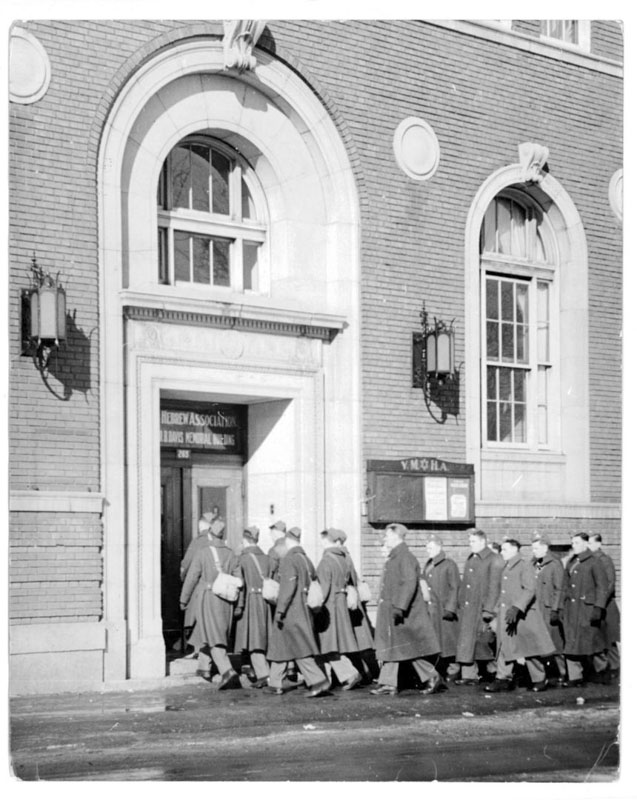 New recruits entering the YMHA during WWII. During the War, 17,000 Canadian Jews joined the Canadian Armed Forces.Photo Credit : Jewish Public Library - Archives
New recruits entering the YMHA during WWII. During the War, 17,000 Canadian Jews joined the Canadian Armed Forces.Photo Credit : Jewish Public Library - Archives -
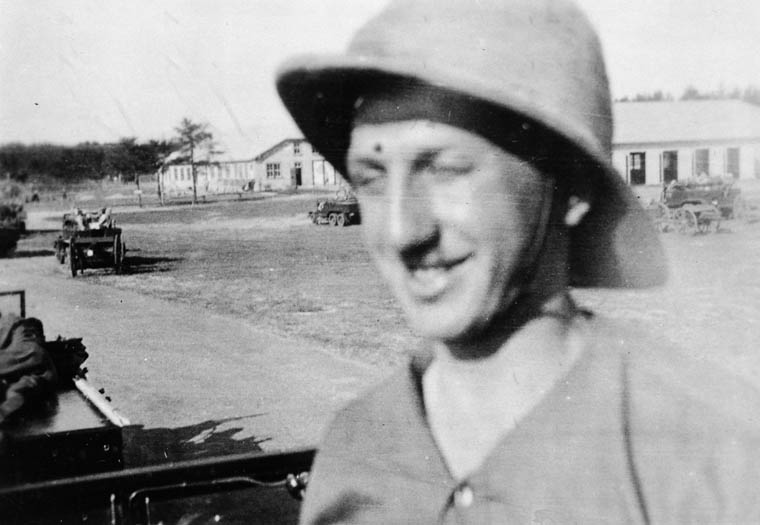 Sydney S. Shulemson, 7th (Montreal) Field Battery, R.C.A.Photo Credit : Library and Archives Canada
Sydney S. Shulemson, 7th (Montreal) Field Battery, R.C.A.Photo Credit : Library and Archives Canada -
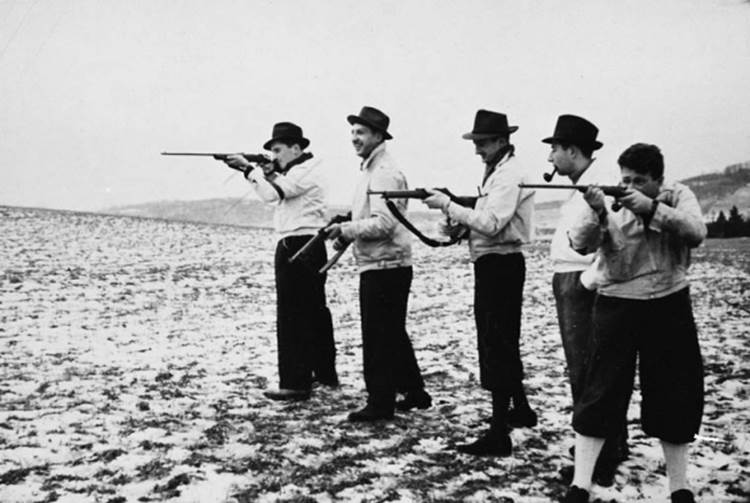 Sydney S. Shulemson (2nd from left) in Saint-Sauveur, Quebec, 1938.Photo Credit : Library and Archives Canada
Sydney S. Shulemson (2nd from left) in Saint-Sauveur, Quebec, 1938.Photo Credit : Library and Archives Canada -
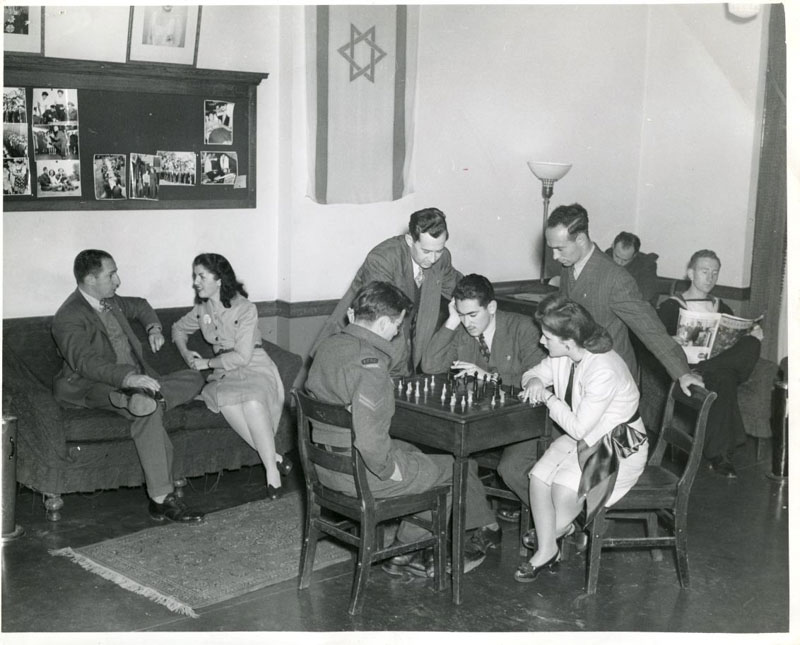 The YMHA Active Service Centre Room during WWII.Photo Credit : Jewish Public Library - Archives
The YMHA Active Service Centre Room during WWII.Photo Credit : Jewish Public Library - Archives -
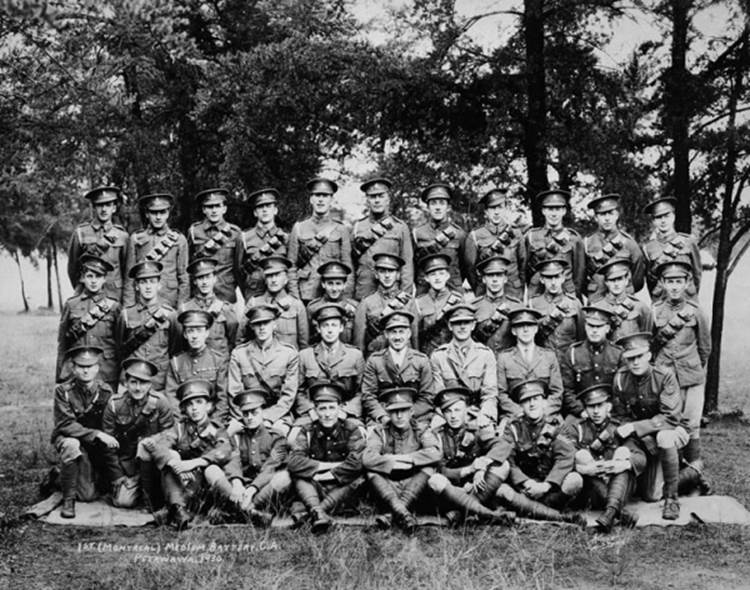 Sydney S. Shulemson, 6th from left in the 3rd row, Petawawa, Ontario, 1930.Photo Credit : Library and Archives Canada
Sydney S. Shulemson, 6th from left in the 3rd row, Petawawa, Ontario, 1930.Photo Credit : Library and Archives Canada -
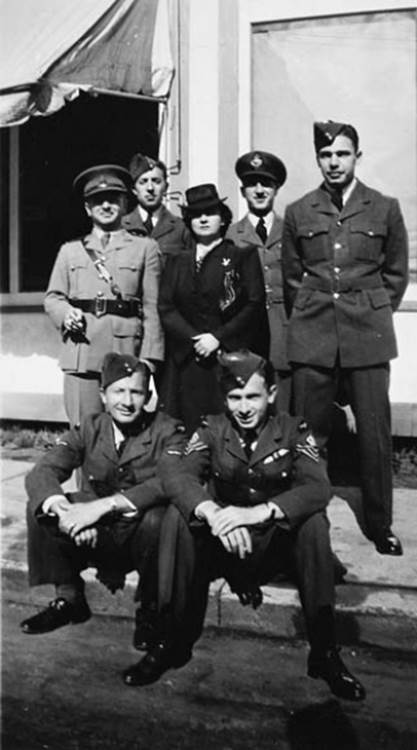 Sydney S. Shulemson (4th from left) and a group of soldiers in Monction, N.B., 1942.Photo Credit : Library and Archives Canada
Sydney S. Shulemson (4th from left) and a group of soldiers in Monction, N.B., 1942.Photo Credit : Library and Archives Canada -
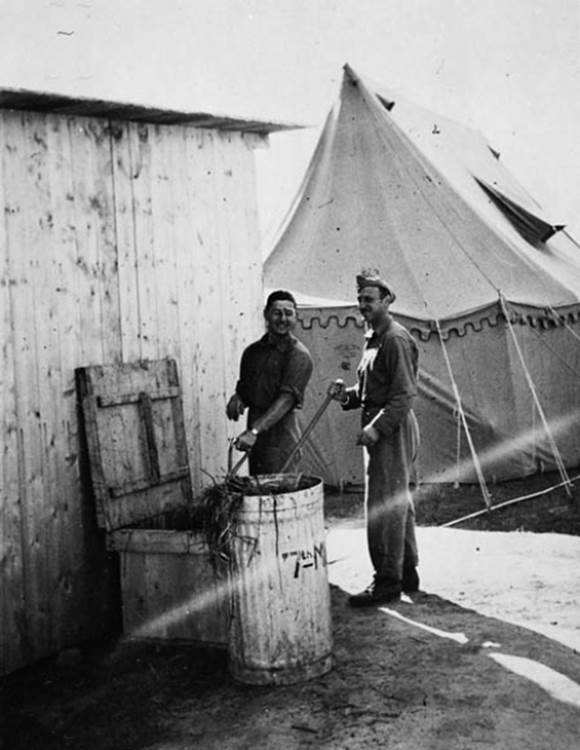 Sydney S. Shulemson (right), 1940.Photo Credit : Library and Archives Canada
Sydney S. Shulemson (right), 1940.Photo Credit : Library and Archives Canada -
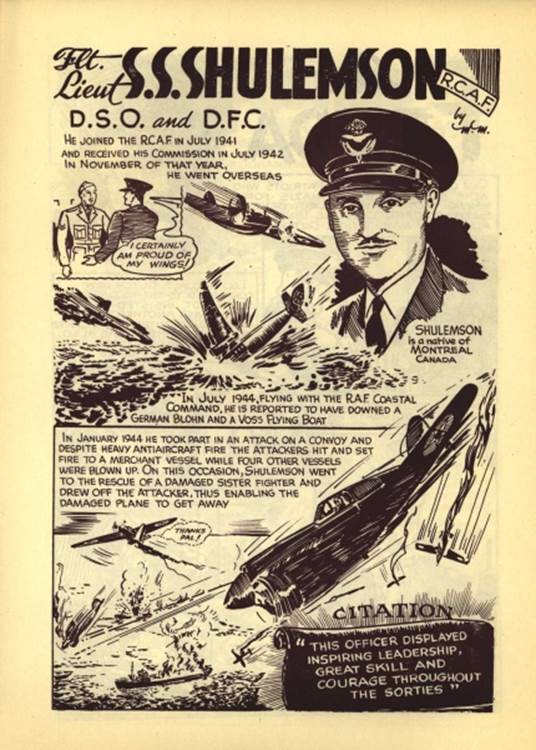 Shulemson's biography, published by the CJC in 1944 in their comic strip series Jewish War Heroes.Photo Credit : Alex Dworkin Canadian Jewish Archives
Shulemson's biography, published by the CJC in 1944 in their comic strip series Jewish War Heroes.Photo Credit : Alex Dworkin Canadian Jewish Archives
Sydney Simon Shulemson
In the modern era, Jews have served their countries bravely in all branches of the armed forces.
The Second World War and the Holocaust, in particular, demanded Jewish involvement in the war effort. Over 1.5 million Jews served in the Allied Forces (Canada, UK, US, USSR) and, of those, 16,441 men and 279 women served in Canada’s Armed Forces. While Jews made up 1.5% of the 1940 population of Canada, they composed 2.6% of the RCAF, 1.4% of its soldiers and 0.7% of its sailors. 39% of eligible Jewish men in Canada served their country.
17,000 Canadian Jews fought against Nazism. Montreal-born Wing Commander Harry Shapiro, for instance, received his first Distinguished Flying Cross in 1942 from King George VI for missions over Cologne and Berlin. He received his second Distinguished Flying Cross after completing 49 stories. Several Canadian Jews were captured by the Germans and kept as Prisoners of War, and slightly over 400 Canadian Jewish military personnel were killed in the service of their country.
Squadron Leader Sydney Simon Shulemson was Canada’s most decorated, and best known, Jewish fighter/bomber pilot, responsible for inflicting heavy damages on German ships in the North Atlantic. He was a graduate of Baron Byng High School and McGill. After enlisting in the Canadian Armed Forces in 1939, he flew some 50 missions with the 404th Battalion, including several victorious ones against German forces. He received the Distinguished Service Order and the Distinguished Flying Cross for his services with the Royal Canadian Air Force. His exemplary achievements illustrate the commitment of all those in Montreal’s Jewish community who served with the Canadian army.
In 1947, Shulemson attended a clandestine meeting in New York City to discuss the defense of the future state of Israel. He made a case for the importance of air power, a recommendation that appears to have contributed to the creation of the Israeli Air Force. Back in Montreal, his birth city, he recruited pilots and procured weapons and planes for the defense of the emerging Israeli state. In 1947, Shulemson and his brother-in-law, Morris “Two Gun” Cohen, engaged in backroom diplomacy to persuade China not to vote against the UN Partition Plan for the creation of the State of Israel. Shulemson was honoured with a citation as a Fighter for the State of Israel.
Special thanks to the Museum of Jewish Montreal.
Learn more:
http://www.imjm.ca/location/2545
https://www.thestar.com/news/2007/02/05/ace_aviator_honed_technique_for_rocket_attacks.html
http://www.canada.com/story.html?id=6223c001-4925-41b1-bcb9-08283aa1e550
http://www.ctvnews.ca/canadian-war-hero-syd-shulemson-has-died-1.227540
http://www.cija.ca/canadian-wwii-fighter-pilot/
J.L. Granatstein, “Ethnic and Religious Enlistment in Canada During the Second World War,” Canadian Jewish Studies, vol. 21, 2013 [2014].
Gerald Tulchinsky, Canada’s Jews: A People’s Journey.
http://www.canadaveteranshallofvalour.com/ShapiroH.htm

